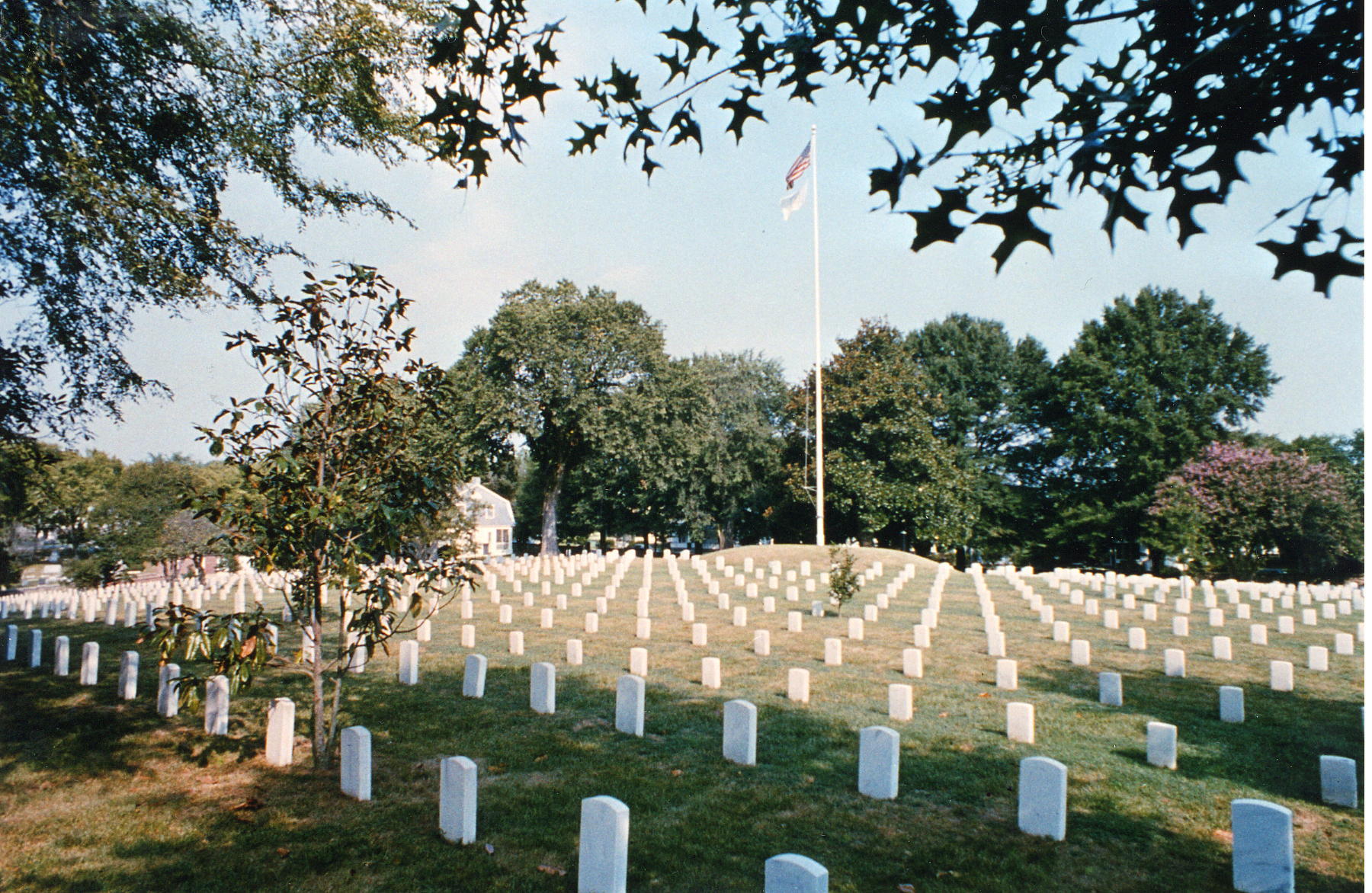Danville National Cemetery
1900 East Main Street
Danville, IL 61832
Phone: (217) 554-4550 or 4291
FAX: (217) 554-4803
To schedule burials: See General Information
|
Office Hours:
Monday thru Friday 8:00 a.m. to 4:30 p.m.
Closed federal holidays except Memorial Day.
Visitation Hours:
Open daily during daylight hours.
|

|
Burial Space: This cemetery has space available to accommodate casketed and cremated remains.
Acreage: 63.3
Number of Interments
Thru Fiscal Year 2008: 10,526
General Information Kiosk on Site? Yes
Floral/Ground Regulations
|
Directions from nearest airport:
Vermilion County Airport on Bowman Avenue Road is approximately 10 miles from the cemetery. Travel south on Bowman Avenue Road (which changes to Bowman Avenue). Turn left on East Main Street. At the third traffic light, which is at the entrance of the VA Illiana Health Care System, turn right. Follow the signs directing you to the cemetery. The cemetery is located on the east side of the campus.
|
GENERAL INFORMATION
To schedule a burial: Fax all discharge documentation to the National Cemetery Scheduling Office at 1-866-900-6417 and follow-up with a phone call to 1-800-535-1117.
Military Funeral Honors
Local veterans organizations provide military honors. Please contact the cemetery office for further information.
back to top
HISTORICAL INFORMATION
Danville National Cemetery is located in Vermilion County, Ill., at the eastern side of the VA Illiana Health Care System. This area once belonged to the Miami, Kickapoo and Pottowatomie tribes of the Algonquin Indians. Salt deposits located on the Vermilion River attracted a variety of wildlife that served as a constant food supply for the local Native Americans; they later attracted the first white settlers to the region. In 1818, the Kickapoo ceded a large area of land to the federal government, including what is now Vermilion County. In the mid-1800s, coal miners settled in the Danville area, and soon the region ranked as Illinois’ top coal producer. From 1841 to 1859, Abraham Lincoln practiced law in Danville; in 1852, he established a law practice with Ward Lamon. This was Lincoln’s only permanent law office in the Illinois circuit.
Although no Civil War battles occurred here, many men from Danville volunteered for the Union. The men who returned home were often sick, wounded or disabled. In 1897, Congress authorized the establishment of the National Home for Disabled Volunteer Soldiers in Danville. The next year, a small plot of land was set aside as a burial site; it was subsequently designated a national cemetery in 1898. In 1901, the present cemetery was plotted and the remains of those buried in the old cemetery were reinterred at the new site.
In 1930, the Soldiers Home was transferred to the Veterans Administration (VA), and the cemetery became part of the VA Cemetery System. An internal study of the VA Cemetery System in 1948 recommended that the cemetery be transferred to the Department of the Army. No action was taken, however, and in 1973 when the National Cemetery System was reassigned from the Department of the Army to the Veterans Administration, it was merged into the National Cemetery System. Danville National Cemetery was listed on the National Register of Historic Places in 1992.
Monuments and Memorials
The Soldiers Monument at Danville National Cemetery was dedicated on Memorial Day in 1917. The monument consists of a granite base topped by a bronze life-sized figure depicting a young Civil War soldier holding his musket. Clark Noble was the sculptor.
back to top
NOTABLE PERSONS
Medal of Honor Recipients
Lieutenant Morton A. Read, (Civil War), Company D, 8th New York Cavalry. At Appomattox Station, Va., April 8, 1865 (Section 10, Grave 3033).
Others
Unknown Soldier interred in section 2, gravesite 274, date of death August 15, 1903.
back to top
FLORAL/GROUNDS REGULATIONS
Cemetery policies are conspicuously posted and readily visible to the public.
Floral arrangements accompanying the casket or urn at the time of burial will be placed on the completed grave. Natural cut flowers may be placed on graves at any time of the year. They will be removed when they become unsightly or when it becomes necessary to facilitate cemetery operations such as mowing.
Artificial flowers and potted plants will be permitted on graves during periods when their presence will not interfere with grounds maintenance. As a general rule, artificial flowers and potted plants will be allowed on graves for a period extending 10 days before through 10 days after Easter Sunday and Memorial Day.
Christmas wreaths, grave blankets and other seasonal adornments may be placed on graves from Dec. 15 through Jan. 20. They may not be secured to headstones or markers.
Permanent plantings, statues, vigil lights, breakable objects and similar items are not permitted on the graves. The Department of Veterans Affairs does not permit adornments that are considered offensive, inconsistent with the dignity of the cemetery or hazardous to cemetery personnel. For example, items incorporating beads or wires may become entangled in mowers or other equipment and cause injury.
Permanent items removed from graves will be placed in an inconspicuous holding area for one month prior to disposal. Decorative items removed from graves remain the property of the donor but are under the custodianship of the cemetery. If not retrieved by the donor, they are then governed by the rules for disposal of federal property.
back to top
|


